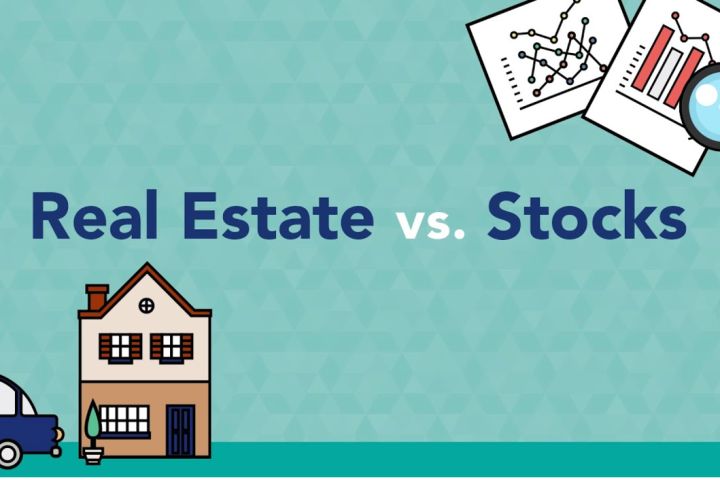When it comes to building wealth, two popular investment options consistently stand out – stocks and real estate. Both asset classes offer unique advantages, but they differ in terms of risk, returns, and liquidity. Understanding the dynamics of each can help investors decide where to allocate their hard-earned money for maximum returns. This article delves into the strengths and weaknesses of stocks and real estate, providing insights to guide you towards smarter investment decisions.

The Case for Stocks
Investing in stocks allows individuals to buy shares in publicly traded companies, essentially owning a portion of the business. Stocks have long been considered one of the best ways to build wealth over time, primarily due to their high liquidity and growth potential. One of the most popular benchmarks for stock performance is the S&P 500, an index that tracks 500 of the largest companies in the United States.
Historically, the S&P 500 has delivered an average annual return of approximately 10%, making it an attractive option for long-term investors. This growth is driven by factors such as technological advancements, market expansion, and overall economic development. Additionally, investing in index funds that mirror the performance of the S&P 500 can offer diversification, reducing the risks associated with individual stock picking.
Stocks also offer the advantage of compound growth. Reinvesting dividends and holding stocks for extended periods can significantly amplify returns. Moreover, stocks require minimal management compared to real estate, making them an excellent choice for passive investors.
The Case for Real Estate
Real estate, on the other hand, involves purchasing properties with the expectation of generating rental income or capital appreciation. Real estate is often viewed as a tangible, stable investment that can hedge against inflation. Unlike stocks, which can experience significant volatility, real estate prices tend to appreciate steadily over time.
Rental properties provide a consistent income stream, making real estate appealing to investors seeking cash flow. Additionally, real estate allows for leverage, meaning investors can use borrowed funds to purchase properties, potentially magnifying returns. Tax benefits, such as deductions on mortgage interest, property taxes, and depreciation, further enhance the appeal of real estate investments.
Real estate also offers the advantage of control. Investors can increase property value through renovations or strategic management, directly influencing the profitability of their investment. This hands-on approach can be rewarding for those willing to put in the effort.
Risk and Liquidity Comparison
While both stocks and real estate offer substantial returns, they differ significantly in terms of risk and liquidity. Stocks are highly liquid, meaning they can be bought and sold quickly. This liquidity provides flexibility, allowing investors to respond swiftly to market changes. However, the stock market is prone to volatility, with prices fluctuating based on economic conditions, company performance, and geopolitical events.
Real estate, in contrast, is a relatively illiquid asset. Selling a property can take weeks or even months, limiting an investor’s ability to access funds quickly. Additionally, real estate markets can be affected by local economic conditions, interest rates, and supply and demand dynamics. Despite these risks, real estate tends to be less volatile than stocks, offering a sense of stability.
Return on Investment (ROI) Comparison
When comparing returns, stocks generally outperform real estate over the long term. The average annual return for real estate typically ranges from 8% to 12%, while the S&P 500 averages around 10%. However, real estate investors can achieve higher returns through leverage, turning a modest initial investment into substantial profits.
For example, purchasing a property with a 20% down payment and leveraging the remaining 80% can lead to significant returns if the property appreciates. Additionally, rental income can provide a steady cash flow, contributing to overall ROI. On the other hand, stocks provide dividends, stock splits, and the potential for substantial capital gains, offering consistent growth without the need for active management.
Diversification and Portfolio Balance
A balanced investment portfolio often includes both stocks and real estate. Diversifying across different asset classes helps mitigate risk and enhances overall returns. Stocks offer growth and liquidity, while real estate provides stability and passive income. By investing in both, investors can enjoy the best of both worlds, creating a resilient financial strategy.
Which is Right for You?
The decision between stocks and real estate ultimately depends on individual goals, risk tolerance, and investment horizons. If you prefer a hands-off approach with high liquidity, stocks may be the better option. Alternatively, if you value tangible assets and passive income, real estate could be more appealing.
Investors seeking maximum returns often benefit from a combination of both stocks and real estate. By carefully assessing personal financial goals and market conditions, you can build a diversified portfolio that maximizes growth and minimizes risk.
Final Words
In conclusion, both stocks and real estate offer compelling opportunities for wealth creation. Whether you choose to invest in the S&P 500 or purchase rental properties, the key lies in making informed decisions and staying committed to long-term growth strategies.
We hope you found this blog post on Stocks vs. Real Estate: Where Should You Invest for Maximum Returns?, useful. Be sure to check out our post on Advantages of Selling Your House Privately for more great tips!
Have Experience in the Moving Industry? Want an Additional Income Stream? Work With All Around Moving!
Partner with us and join the Work With Us program, and we’ll help you make money by establishing your own moving consultant business. Read the terms by Clicking here to learn more.





